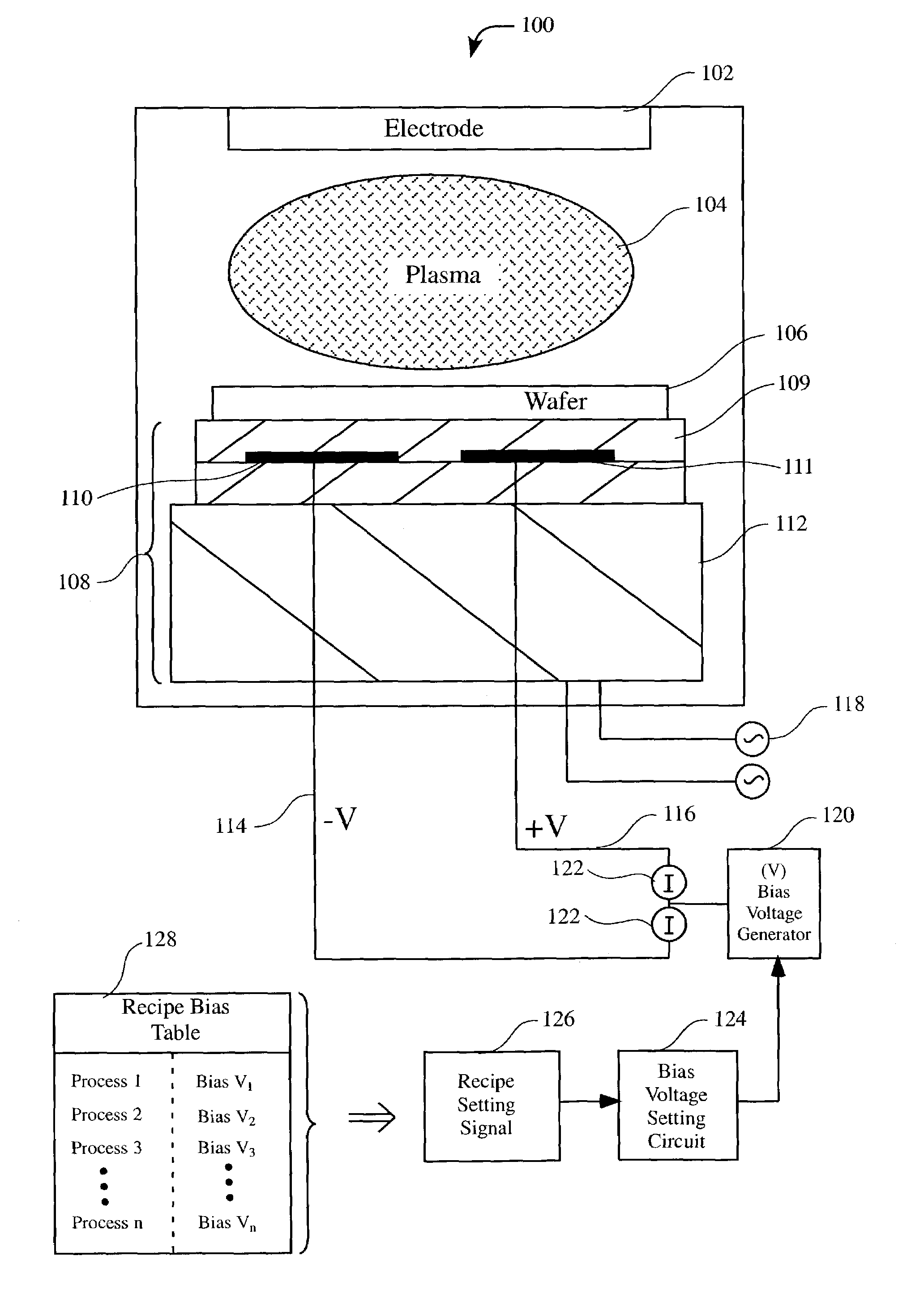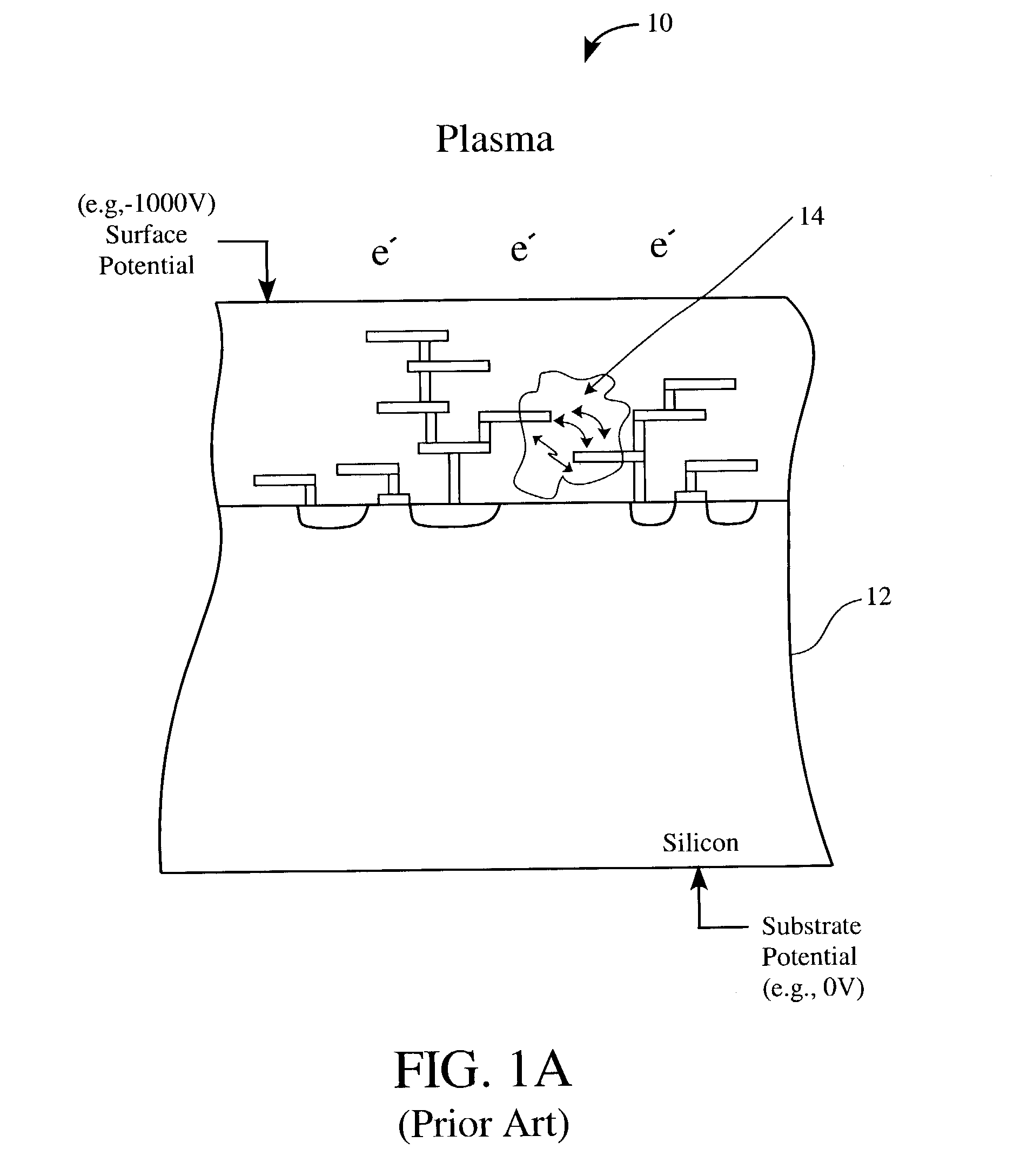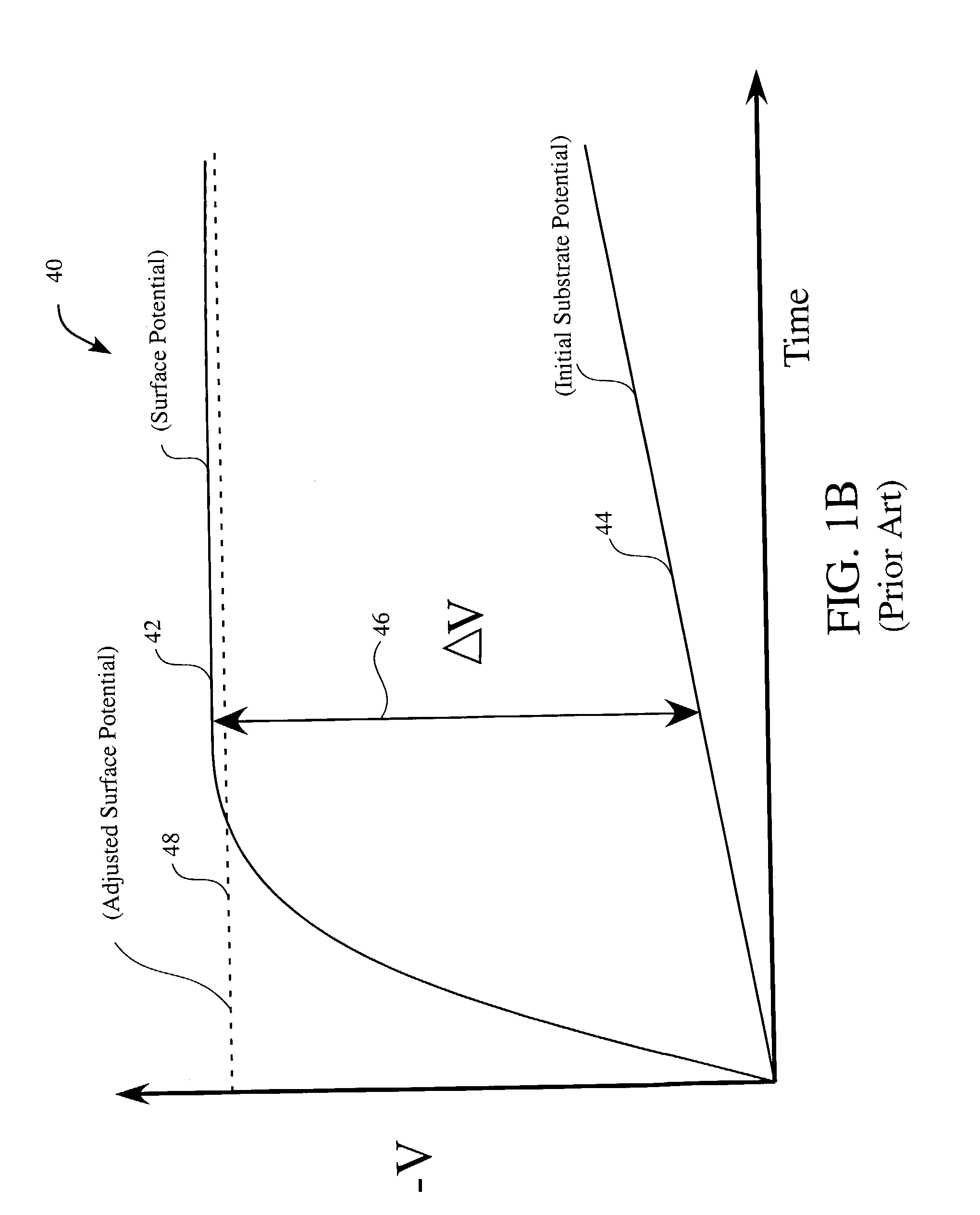Method for reducing wafer arcing
a technology of arcing and wafers, applied in the direction of electrostatic holding devices, semiconductor/solid-state device testing/measurement, instruments, etc., can solve the problems of device destruction, yield loss of product wafers, general drive of negative wafer potential, etc., and achieve the effect of reducing the arcing of wafers in the etching operation
- Summary
- Abstract
- Description
- Claims
- Application Information
AI Technical Summary
Benefits of technology
Problems solved by technology
Method used
Image
Examples
Embodiment Construction
[0027]An invention is disclosed for a method to intelligently decreasing wafer arcing during etch procedures and other procedures such as, for example, deposition procedures or whenever there is a process where plasma interacts with a wafer and a bias compensation is needed. In the following description, numerous specific details are set forth in order to provide a thorough understanding of the present invention. It will be understood, however, by one of ordinary skill in the art, that the present invention may be practiced without some or all of these specific details. In other instances, well known process operations have not been described in detail in order not to unnecessarily obscure the present invention.
[0028]In general terms, the present invention is directed toward a method whereby an etch process may be utilized with a dramatic reduction in arcing between structures of the wafer, between a structure and the substrate, or between a structure and the plasma. This may be acc...
PUM
 Login to View More
Login to View More Abstract
Description
Claims
Application Information
 Login to View More
Login to View More - R&D
- Intellectual Property
- Life Sciences
- Materials
- Tech Scout
- Unparalleled Data Quality
- Higher Quality Content
- 60% Fewer Hallucinations
Browse by: Latest US Patents, China's latest patents, Technical Efficacy Thesaurus, Application Domain, Technology Topic, Popular Technical Reports.
© 2025 PatSnap. All rights reserved.Legal|Privacy policy|Modern Slavery Act Transparency Statement|Sitemap|About US| Contact US: help@patsnap.com



